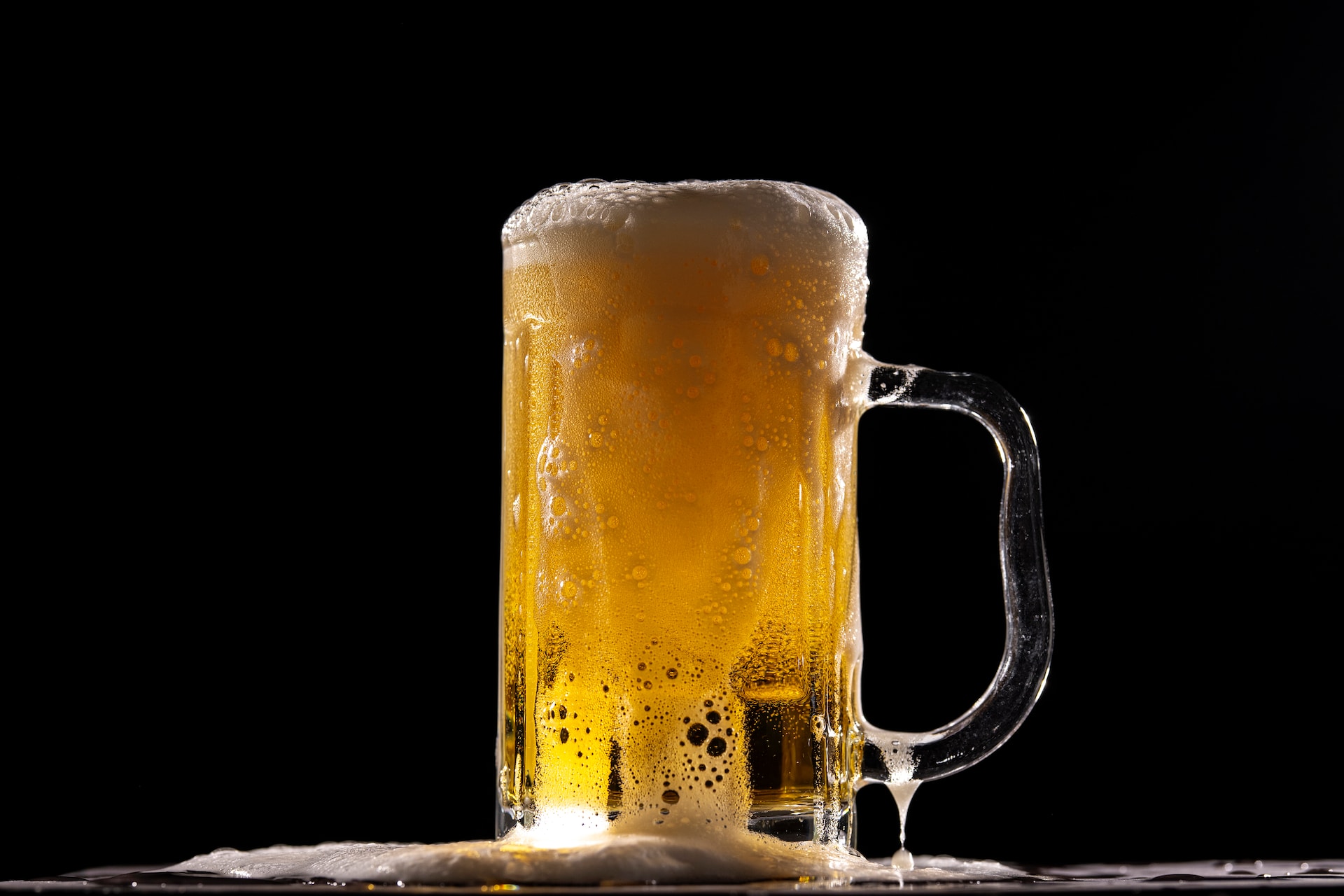
If you’re a fan of crisp, crushable beers, there’s a good chance you enjoy a good light lager or a pilsner. Both are no-frills, thirst-quenching and (hopefully) balanced and flavorful. But what’s the difference between a pilsner and a lager? Well, the short answer is that all pilsners are lagers, but not all lagers are pilsners. But the long answer is a little more complicated.
A pilsner is a lager

If you didn’t understand what we were saying earlier with “all pilsners are lagers, but not all lagers are pilsners”, let us break it down. Lager is the umbrella term for the beer style. Believe it or not, a pilsner is actually a type of lager. Other lagers include Vienna-style lagers, Helles lagers, bocks, doppelbocks, marzens, and more.
What’s a lager?

Lagers are bottom-fermented beers that are brewed and bottle-conditioned at cold temperatures. The word lager comes from the German word “lagern” which translated into English means “to store”. This is a reference to the fact that many beers of this style are matured or “lagered” in cellars, caves, and other underground spaces for weeks or months.
While (as we mentioned earlier) there are different types of lagers, in general, they have a crisp, clean, refreshing flavor profile with a nice backbone of malt sweetness. There’s a reason lagers are the most popular beer style in the world. They taste the way you envision beer in your head, and that’s a good thing.
What’s a pilsner?

When it comes to lagers, the pilsner is the most commonly imbibed beer style in the world. Also called the pale lager, the pilsner was first created back in 1842 in the Bohemian city of Plzeň in the Czech Republic. This is where one of the most iconic beer styles in the world was brewed for the first time, thus creating the pale lager style. Of course, we’re talking about the beloved, refreshing, crisp, clean Pilsner Urquell.
Since then, brewers all over the world (especially in Germany) have created their own take on the pilsner style. While there are different types of pilsners (Czech style, German style, American, Italian, and others), the style is well-known for its very refreshing, crushable, malty-sweet, crisp, and often dry flavor profile.
Lagers vs. pilsners

Now that we have learned a little bit about the key differences between lagers and pilsners, it’s time to differentiate the two based on appearance. Pilsners are referred to as pale lagers for a reason. While other lagers might range from bright yellow to amber to caramel-colored and beyond, pilsners never have a dark appearance. They are always pale yellow to corn yellow—never darker than that.
Also, while some lagers can have a much higher sweet, caramel malt flavor, pilsners are almost always honey-sweet with a ton of crisp, dry, floral flavors. While some lagers can be heavy, pilsners are always light, clean, and refreshing.
Popular pilsners

Now that you’ve learned a little bit about the differences (and similarities) between pilsners and lagers, it’s time to find some to drink. We mentioned Pilsner Urquell earlier. Any pilsner journey must start with this classic beer. Other notable pilsners include Bitburger and Rothaus Tannenzäpfle from Germany and Victory Prima Pils and Firestone Walker Pivo Pils in the US. Whether you go for a Czech, German, Belgian, Italian, or American craft pilsner, there are countless beers to choose from.
Popular lagers that aren’t pilsners

Many lagers aren’t pilsners. They include the very popular Budweiser lager as well as Yuengling lager and even Corona Extra. If you want to get into German lagers, you can dive into Augustiner Helles, Paulaner Salvator, Spaten Optimator, and more. American bocks include Troegs Troegenator, Shiner Bock, and more. American-made Vienna lagers include Dovetail Vienna Lager, von Trapp Vienna-style lager, and many more.
In the simplest terms, there are a lot of non-pilsner lagers to choose from and they range from light, crisp, refreshing flavors to dark, malty, sweet, rich flavors. There’s something for every palate.
Bottom line

If you’re comparing lagers and pilsners, your best bet to fully understand the two is to taste them side by side. And we aren’t saying to grab a Pilsner Urquell and a Bud Light and sip them one after another. You should crack open a doppelbock, bock, helles-style lager, or Vienna-style lager and a crisp, light, refreshing pilsner and drink them side by side. You’ll be amazed at the very noticeable differences, and you’ll have a better idea about the two beer styles. You can read about lagers and pilsners all day long, but nothing beats drinking them.



